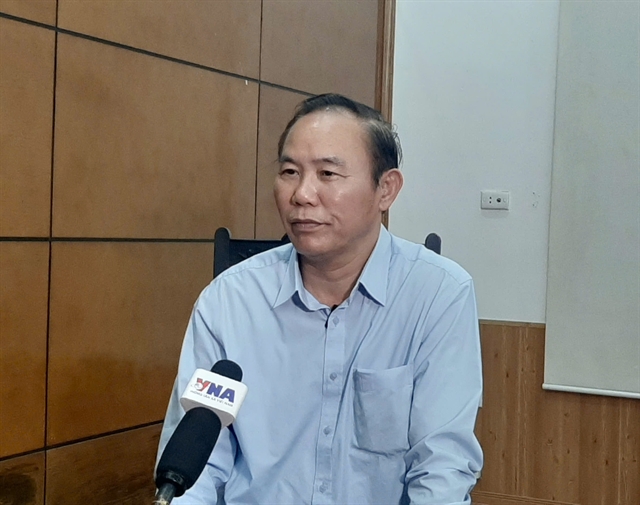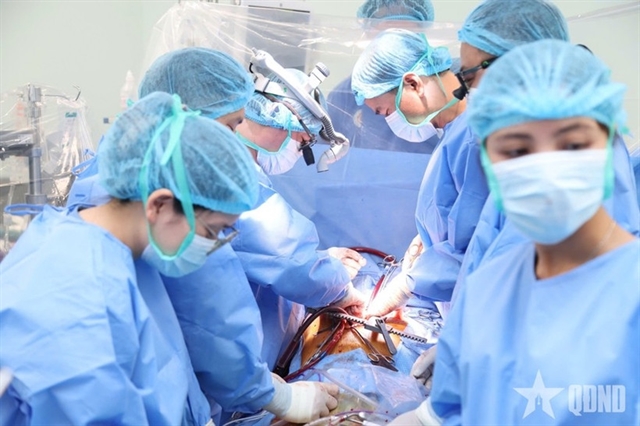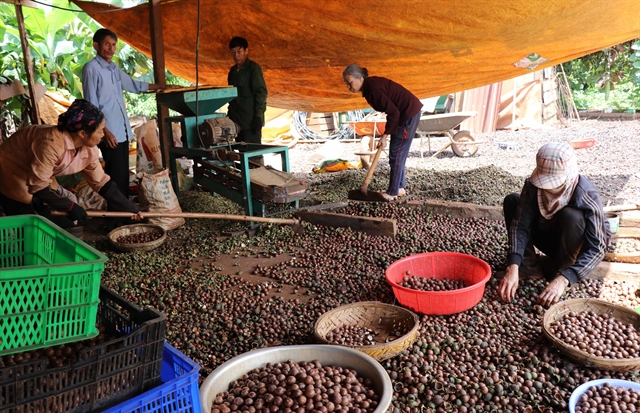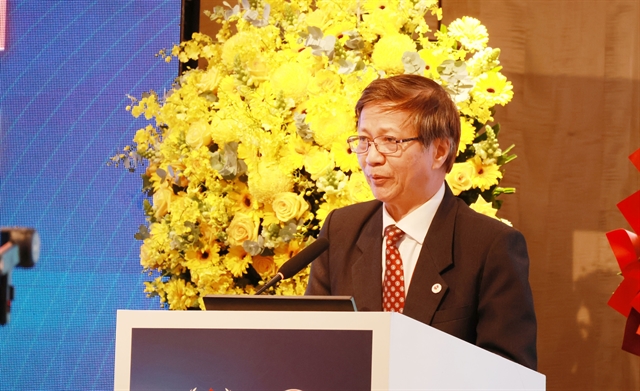 Opinion
Opinion

Huỳnh Ngọc Huy, general secretary of the Việt Nam Macadamia Association, talks with Nhân Dân (People) Weekly about the development of the macadamia industry in Việt Nam.

|
| A household-based macademia processing business in Chư Prông District, the Central Highlands Province of Gia Lai. — VNA/VNS Photo Hồng Điệp |
Huỳnh Ngọc Huy, general secretary of the Việt Nam Macadamia Association, talks with Nhân Dân (People) Weekly about the development of the macadamia industry in Việt Nam.
Macadamia trees were brought to Việt Nam 20 years ago, but why has this plant only undergone more research in the last five years?
The macadamia tree is a multi-purpose tree because it has good growth potential, high socio-economic efficiency, and can be developed on a large scale.
Macadamia trees can be planted as protection forests which contribute to increase the forest coverage rate and protect the ecological environment.
Also, the trees can be planted in border and high areas to bring economic value for people and soldiers, as well as planted at home with other fruit and industrial trees.
In addition, macadamia nuts are dry, easy to harvest, transport, store and process. The nuts can be preserved for a long time after harvesting so that they are good for small-scale processing establishments.
According to figures from the International Nut and Dried Food Council (INC), global macadamia production maintains a good annual growth rate.
Total production in the 2019 crop was up to more than 60,000 tonnes, reaching a growth rate of about 9 per cent per year, led by South Africa and Australia with 29 per cent and 22 per cent of the world market share, respectively.
However, despite continuously increasing in recent years, the production of macadamia only accounts for 1 per cent of the total consumption of nuts in the world.
The INC experts assessed that the macadamia industry has the potential to account for 5 per cent of the total world nut consumption.
The price of macadamia nuts is also on the rise. The trend in the price of macadamia nuts purchased from gardens has been continuously increasing for 30 years (from more than AUD2 (US$1.54) per kilo in 1990 to over AUD6 per kilo in 2020).
This increase is mainly from new markets where people's incomes are improving and macadamia itself has been shown to have health benefits.
Realising that the macadamia tree is a good tree for development and poverty alleviation, in 2016, Him Lam Joint Stock Company and Liên Việt Post Bank established the Việt Nam Macadamia Association.
The association directly guided the cultivation and care techniques of macadamia trees through hundreds of training courses.
In the Tây Nguyên (the Central Highlands) region, there were many typical models of successful macadamia farmers, earning hundreds of millions of đồng per hectare. Many people got rich from growing macadamia, thereby creating a motivation for other households to study and follow the trend.
Initially, macadamia production models between farmers and processing enterprises were formed in Đắk Lắk, Đắk Nông, Lâm Đồng, Lai Châu and Điện Biên provinces.
As a result, there were 26 establishments producing and trading macadamia varieties, of which 20 establishments in the northwest and Central Highlands regions and six in the other provinces of Hà Nội and Thanh Hoá, Nghệ An and Quảng Trị. The establishments produce about 2.5 million grafted trees annually.
The establishments have also contributed to the quality control of seedlings in the market and help farmers understand the importance of macadamia seedlings, avoiding the purchase of poor quality seedlings.
At present, there are 23 provinces planting macadamia trees with a total of about 16,500 ha, of which the association members have 6,000ha, accounting for 38 per cent.
There are currently over 19 macadamia processing establishments, five of them are association members, making up 80 per cent of the country's processing output.
You mentioned the important role of the macadamia seedling, could you tell us more about this?
Since its establishment, the association has co-operated closely with the Ministry of Agriculture and Rural Development (MARD) in investigating, surveying, evaluating and proposing solutions for macadamia development.
Many documents have been issued to guide localities for expanding planting areas. The work of research and breeding have been carried out to produce many varieties which have been recognised for each ecological region for production.
In 2018, MARD issued Circular No. 30/2018/TT-BNNPTNT recognising macadamia as one of the 20 main forest crop species in Việt Nam.
This is a very important legal basis and a prerequisite for solving another fundamental problem of the macadamia industry - the breeding problem.
In recent years, the macadamia areas have expanded and increased rapidly, the trees grow well and produce high yields, especially in the northwest, Tây Nguyên, northeast and the central mountainous areas.
The output problem for agricultural products is always the top concern of farmers and businesses. So, if developed on an industrial scale, many people worry that macadamia will suffer the same impact?
To develop the macadamia industry, it is necessary to focus on linking four entities of the State, farmers, businesses and scientists.
The State creates mechanisms and policies on land, infrastructure and credit while businesses provide investment capital, technology and commit to purchase, process and connect markets, and scientists research and transfer science and technology to farmers and businesses.
In this, the association plays the role as the connection between the entities and sets a master plan of marketing for Vietnamese macadamia products.
The association will ensure prices of Vietnamese macadamia products reaching 85 per cent of the Australian product’s prices in the next ten years.
Recently, in the context of the COVID-19 pandemic, there was a situation of lowering macadamia prices by some traders. So, we provided businesses VNĐ7 billion (US$302,000) to purchase farmers’ nuts to stabilise prices and that situation stopped immediately.
The falling price was not due to the market drop, but the traders forced farmers.
In international trade, many of our agricultural products have suffered losses due to a lack of branding. So what will we do with macadamia?
This is true.
Currently, the world trend is to use organic products, so from the beginning, we have oriented the production of organic macadamia to focus on fastidious markets such as Europe, the US, Japan and the Middle East. And we gradually set up brands for Vietnamese macadamia products.
The most important issue is the market. For Vietnamese farmers, cultivation is not a problem, but the problem is how to sell products at high prices.
At present, the scale of the macadamia industry in Việt Nam is not large, this is an opportunity for us to follow the methodical way from the beginning, avoiding the situation of massive but spontaneous development like some other agricultural products. — VNS




